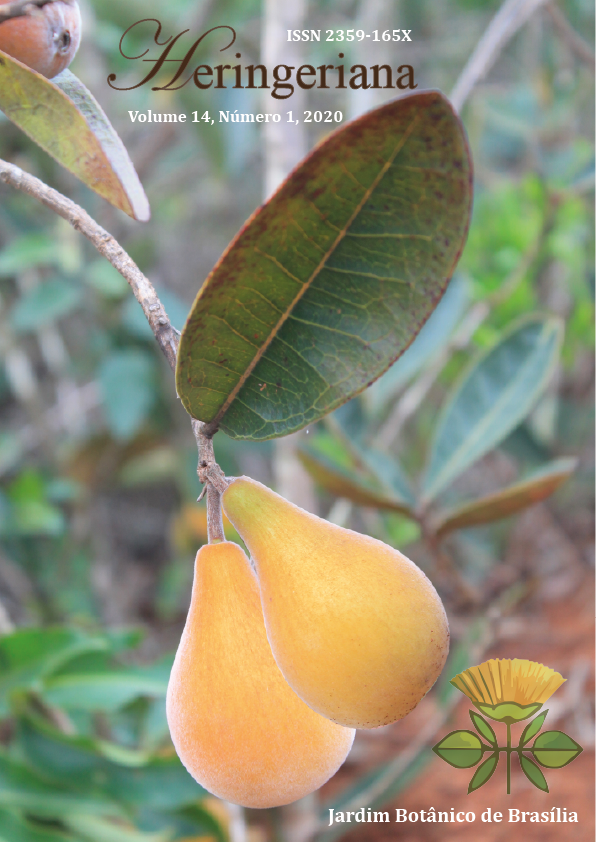Ferns and lycophytes from a forest associated with quartzite fragments in southern Espírito Santo state, Brazil
DOI:
https://doi.org/10.17648/heringeriana.v14i1.917912Abstract
This study presents a checklist of ferns and lycophytes from a forest associated with quartzitic rocky outcrops in southern Espírito Santo state, Brazil. We recorded 52 species and one hybrid (six lycophytes and 47 ferns) belonging to 15 families and 30 genera. Polypodiaceae, Blechnaceae, Cyatheaceae, and Selaginellaceae are the main representative families. Selaginella, Cyathea, Serpocaulon, and Trichomanes are the main representative genera. Most species are terrestrial (34.6%) and lithophytes (32.6%); epiphytes (14.4%) and species with more than one habit (19%) are scarce. We did not record any hemiepiphytic or scandent species. The region is subject to an intense quartzite mining activity, which poses serious threats to the local biodiversity. Morro Branco (Morro de Sal) was recently the site of new taxonomic discoveries in ferns (Oleandra quartziticola) and angiosperms (Paepalanthus capixaba), demonstrating the biological relevance of forest fragments associated with quartzitic rocky outcrops in Espírito Santo, and reinforcing the need for the effective protection of these areas.
Downloads
Published
How to Cite
Issue
Section
License
By submitting, the authors declare that they have not submitted the work to another journal and agree to have their article published under a Creative Commons Attribution 4.0 International BY License (CC BY 4.0), which means that authors retain ownership of the copyright but anyone can use the published content provided the original authors and source are cited. The scientific, orthographic and grammatical content is the full responsibility of the authors.








